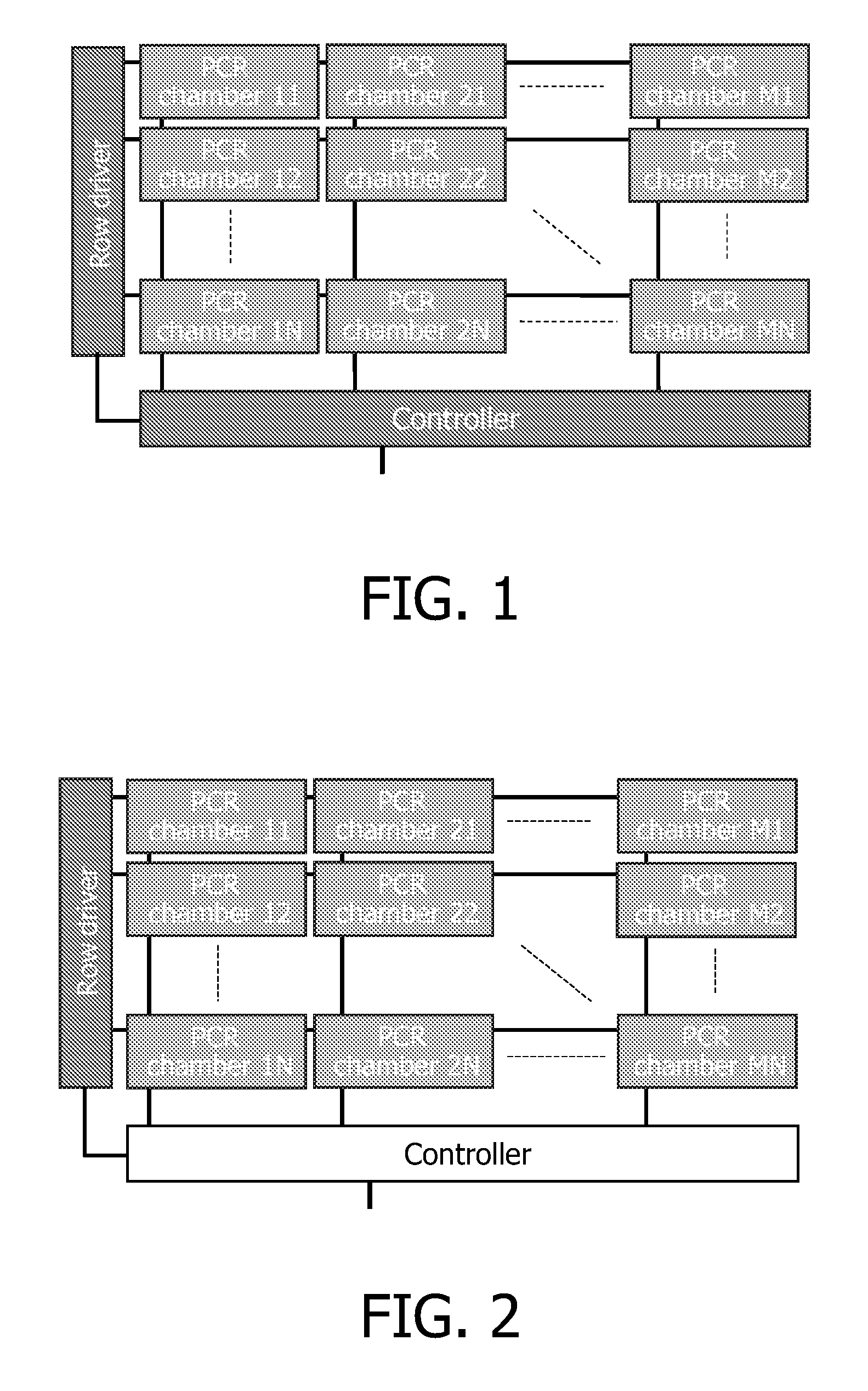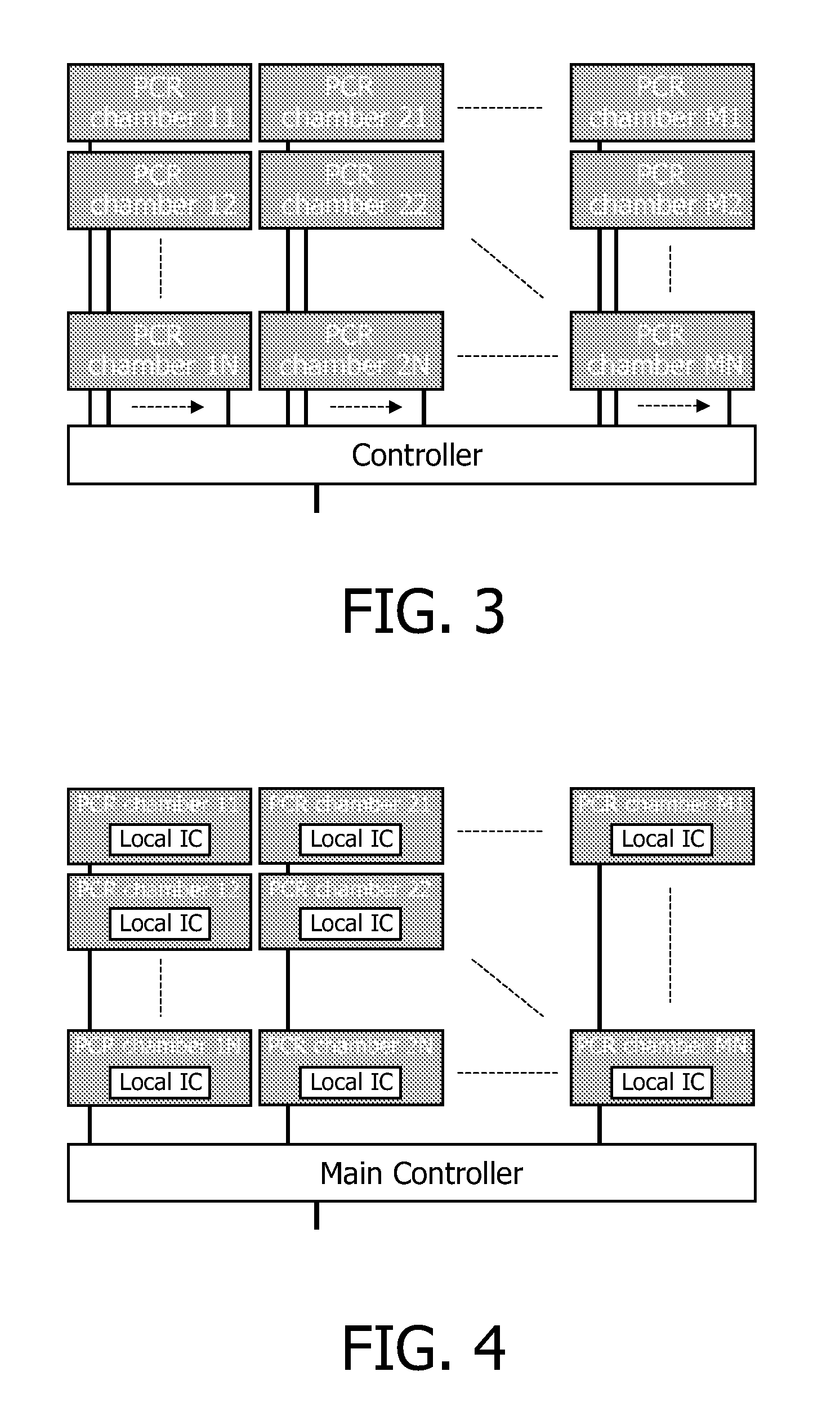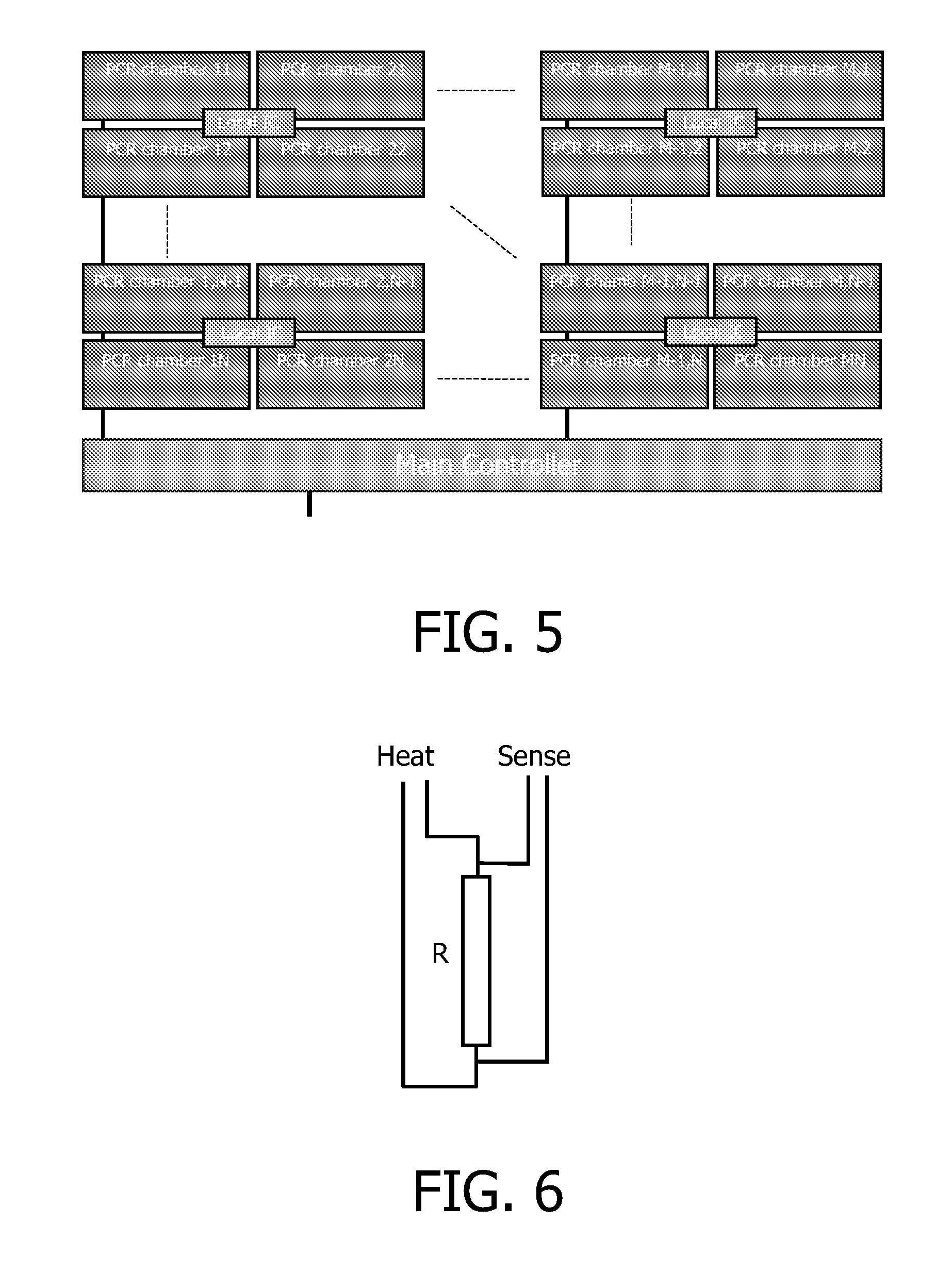Integrated microfluidic device with reduced peak power consumption
a microfluidic device and integrated technology, applied in the field of integrated microfluidic devices, can solve the problems of loss of precision in heating and/or cooling, loss of precision in sensing circuits, etc., and achieve the effects of reducing unwanted voltage drops on supply lines, reducing peak power consumption, and reducing heating precision
- Summary
- Abstract
- Description
- Claims
- Application Information
AI Technical Summary
Benefits of technology
Problems solved by technology
Method used
Image
Examples
embodiment 1
[0158]FIGS. 27, 28 Mapping of PCR Cycle Phases within an Array
[0159]FIG. 27 shows the temperature cycling phases of an example PCR, involving a low temperature φ0, a medium temperature φ1 and a higher temperature phase φ2. The maximum power consumption will occur if all chambers in the array experience the same cycle at the same time i.e. cycle φ2, the highest temperature phase. To avoid this the temperature cycling in the array should be arranged so that the minimum number of φ2 temperature phases are occurring at any one time. The sequence shown in FIG. 28 will enable this. This shows a first row starting with phase 0, then going to phase 1, then phase 2, and repeating this. A second row starts with phase 1, then 2, then 0 and repeats. A third row starts with phase 2, then 0, then 1, and repeats. Note that the temperature in each chamber can be different even if the cycle phase is the same i.e. small variations in the temperature are allowed to enable the benefits of multiplexed P...
embodiment 2
[0161]FIG. 29 Phase Shifting of PCR Temperature Cycles
[0162]Maximum electrical power consumption will occur when the temperature is required to rise, as the controller realizes it must change to a higher temperature maximum power in consumed until the target temperature is approached. Therefore by offsetting the phases of the PCR cycles of each chamber, again the peak power is reduced. FIG. 29 illustrates the procedure. The phase offset can be optimized to achieve the lowest peak power consumption for a given configuration of PCR chambers. If there is a row or column of chambers connected to the same power supply line then it is desirable to protect that line from large voltage drops that may occur with high peak powers. Then the chambers in that column or row should be offset in phase as shown in FIG. 29.
[0163]If the number of chambers within one row or column is N then the period of one temperature phase is divided by N and this will represent the phase shift required to avoid ris...
embodiment 3
[0164]FIG. 30, Altering PCR Phase Lengths
[0165]The phase lengths can also be altered to a certain degree as long as they do not interfere with the biological processes. FIG. 30 shows possible waveforms of neighboring chambers. The duration of the highest temperature is shortened in one cycle, and lengthened in another cycle. This is arranged so that for a given chamber the average duration over a number of cycles is not changed. For a given point in time, one chamber (top waveform) has a longer high temperature duration. The middle waveform has an unchanged duration and the lower waveform has a shorter duration. Notice how the lengths of the phases φ0, φ1 and φ2 can vary but the period of the temperature cycling remains constant so that all PCR chambers finish at approximately the same time.
[0166]FIGS. 31-37 Local Heating Control within a PCR Chamber
[0167]One serious issue is that heating from thin film metals on an insulating substrate such as a glass substrate can produce non-unif...
PUM
| Property | Measurement | Unit |
|---|---|---|
| gate lengths | aaaaa | aaaaa |
| frequency | aaaaa | aaaaa |
| thermal time constant | aaaaa | aaaaa |
Abstract
Description
Claims
Application Information
 Login to View More
Login to View More - R&D
- Intellectual Property
- Life Sciences
- Materials
- Tech Scout
- Unparalleled Data Quality
- Higher Quality Content
- 60% Fewer Hallucinations
Browse by: Latest US Patents, China's latest patents, Technical Efficacy Thesaurus, Application Domain, Technology Topic, Popular Technical Reports.
© 2025 PatSnap. All rights reserved.Legal|Privacy policy|Modern Slavery Act Transparency Statement|Sitemap|About US| Contact US: help@patsnap.com



